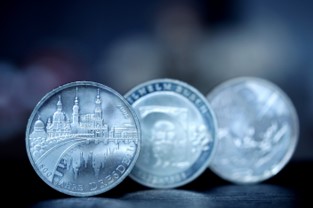In minting, coining is the process of manufacturing coins using a kind of stamping which is now generically known in metalworking as “coining”. A coin die is one of the two metallic pieces that are used to strike a coin, one per each side of the coin. A die contains an inverse version of the image to be struck on the coin. Striking a coin refers to pressing an image into the blank metal disc. Modern dies made out of hardened steel are capable of producing many hundreds of thousands of coins before they are retired and defaced. Coins are usually metal or alloy, or sometimes made of synthetic materials. They are usually disc shaped
Medals Coining Dies and Requirements
Following the design, reliefs, curvature, rim width and height the key factors for the tools can be different. The important points which are determinant for the life time of the die are the cracking resistance, chipping resistance and wear resistance.

The polishability can influence the material flows and friction coefficient, excessive carbide and segregation may causes troubles in polishing, remelted quality of steels generally shows less banding and segregation.
The Erasteel Powder Metallurgy with the ASP® grades is the right choice to improve the life time of dies. The cleanliness of the ASP®, the homogenous carbide distribution in the matrix and the carbides sizes are determinant to optimize the key technical characteristics like toughness, wear resistance, polishability